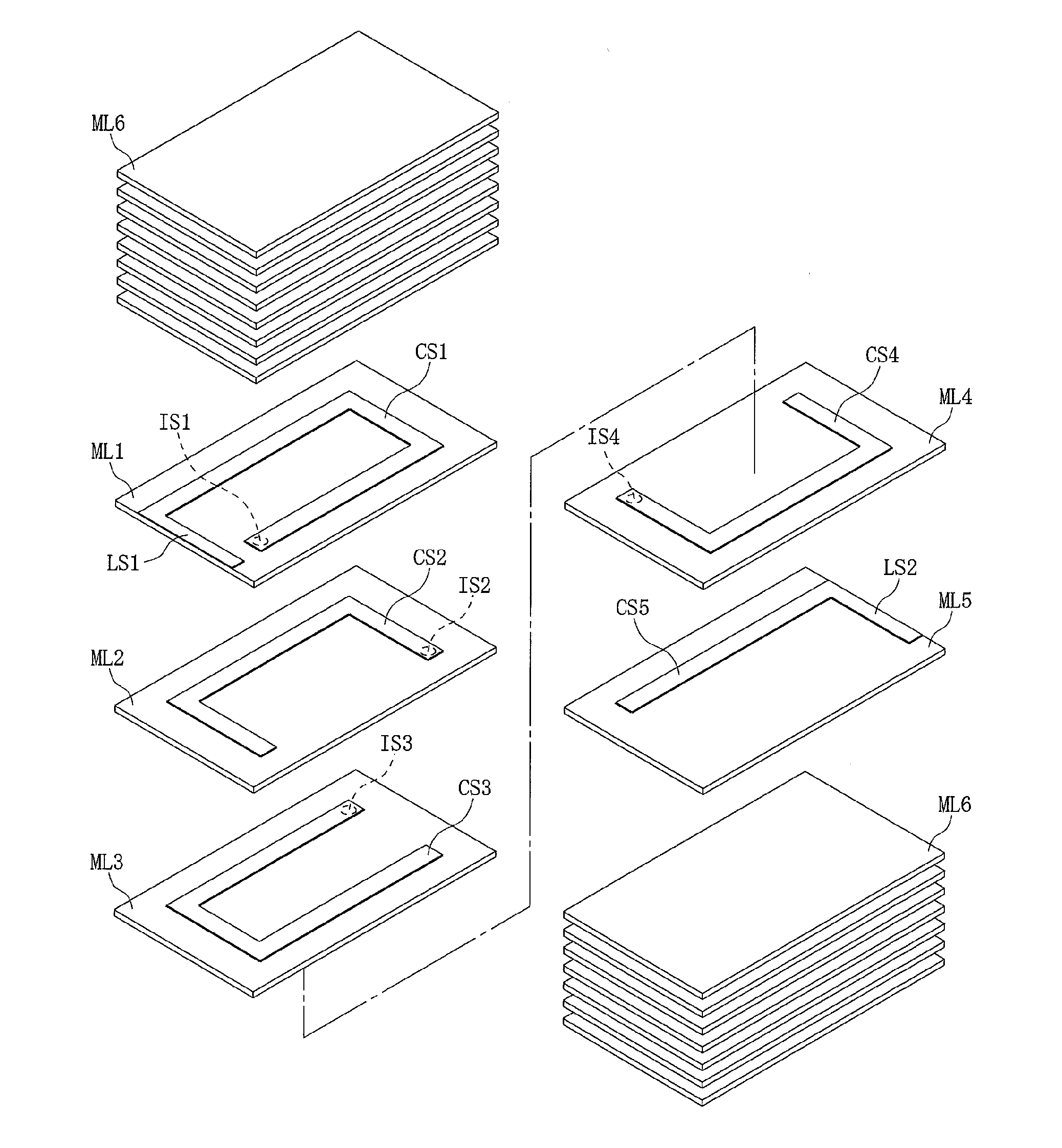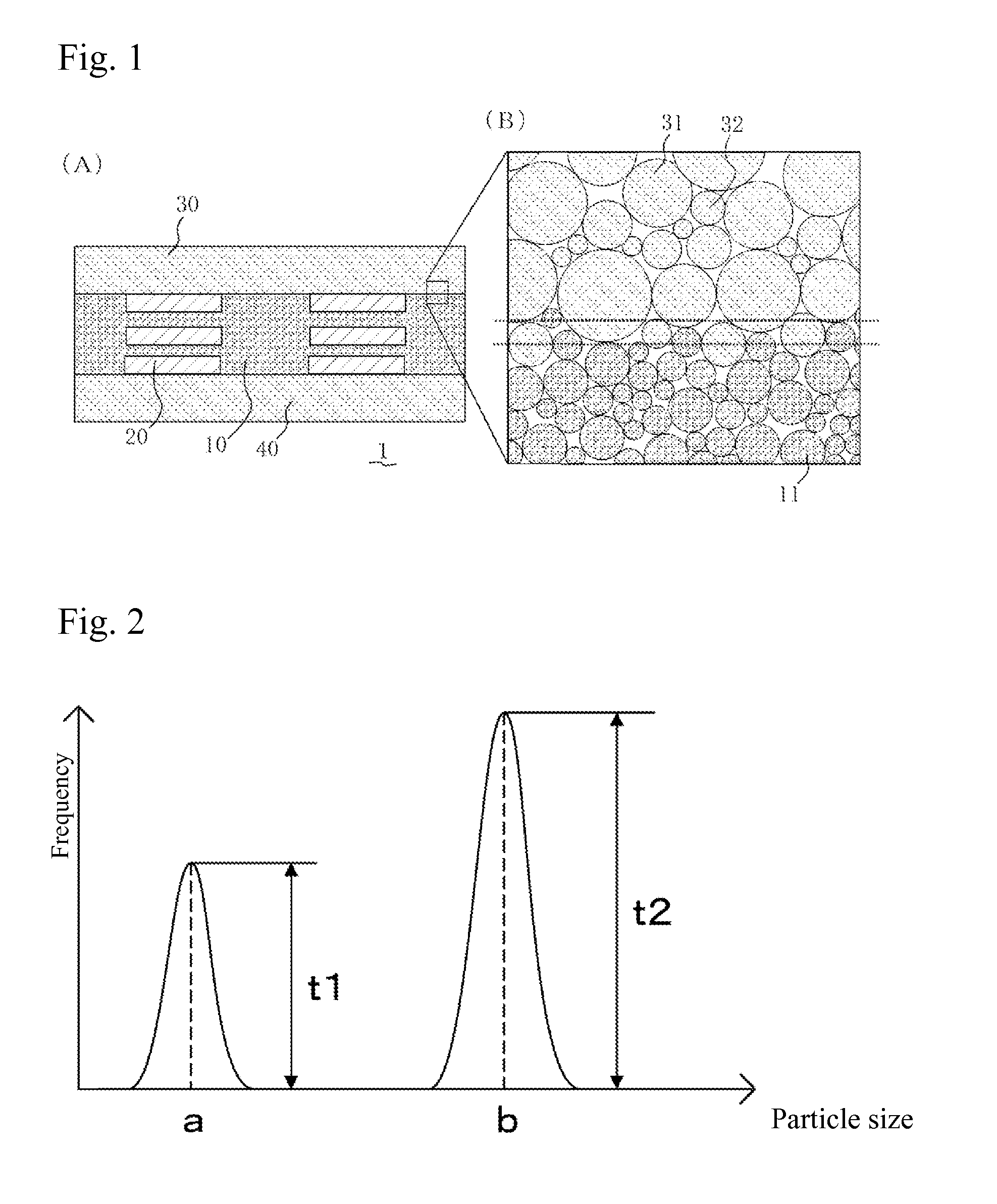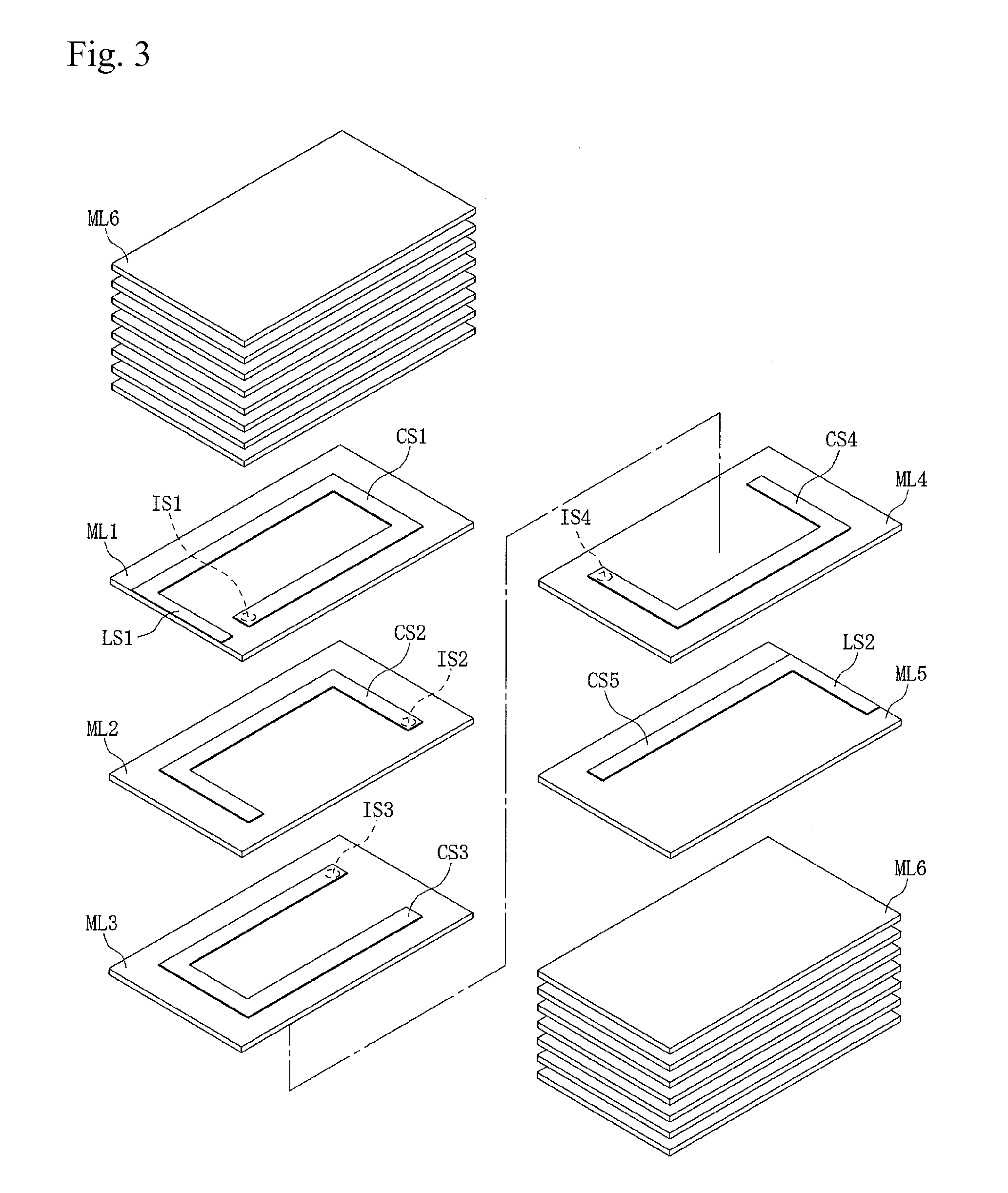Laminated inductor
a technology of inductance and inductance, applied in the direction of transformer/inductance details, inductance, basic electric elements, etc., can solve the problems of short-circuiting or disconnection, low magnetic permeability, and difficulty in achieving the desired inductance or product height, etc., to improve the magnetic permeability of the device, low resistance, and high rated current
- Summary
- Abstract
- Description
- Claims
- Application Information
AI Technical Summary
Benefits of technology
Problems solved by technology
Method used
Image
Examples
example 1
[0077][Specific Structure of Laminated Inductor]
[0078]An example of specific structure of the laminated inductor 1 manufactured in this example is explained. The laminated inductor 1, being a component, has a length of approx. 2.0 mm, width of approx. 1.25 mm and height of approx. 1.25 mm, and an overall shape of rectangular solid.
[0079]FIG. 3 is a schematic exploded view of the laminated inductor. The magnetic material part 10 of the internal conductor forming area has a structure whereby a total of five magnetic layers ML1 to ML5 are integrated together. The top cover area 30 has a structure whereby eight magnetic layers ML6 are integrated together. The bottom cover area 40 has a structure whereby seven magnetic layers ML6 are integrated together. Each of the magnetic layers ML1 to ML5 is formed primarily by soft magnetic alloy particles having one peak in their particle size distribution curve, containing Cr and Si with a D50 of 6 μm by 5 percent by weight and 3 percent by weight...
example 2
[0092]A laminated inductor was obtained in the same manner as in Example 1, except that for the ML6 layers corresponding to the top and bottom cover areas, soft magnetic alloy particles with a D50 of 20 μm and soft magnetic alloy particles with a D50 of 3 μm were mixed at a weight ratio of 8:2.
example 3
[0093]A laminated inductor was obtained in the same manner as in Example 1, except that for the magnetic layers ML1 to ML5, soft magnetic alloy particles having one peak in their particle size distribution curve, and containing Cr and Si with a D50 of 6 μm by 5 percent by weight and 5 percent by weight, respectively, with Fe accounting for the remainder, were used, and that for the ML6 layers corresponding to the top and bottom cover areas, soft magnetic alloy particles with a D50 of 10 μm and soft magnetic alloy particles with a D50 of 1.5 μm, both having the same composition as the soft magnetic alloy particles used for the magnetic layers ML1 to ML5, were mixed at a weight ratio of 8:2.
PUM
 Login to View More
Login to View More Abstract
Description
Claims
Application Information
 Login to View More
Login to View More - R&D
- Intellectual Property
- Life Sciences
- Materials
- Tech Scout
- Unparalleled Data Quality
- Higher Quality Content
- 60% Fewer Hallucinations
Browse by: Latest US Patents, China's latest patents, Technical Efficacy Thesaurus, Application Domain, Technology Topic, Popular Technical Reports.
© 2025 PatSnap. All rights reserved.Legal|Privacy policy|Modern Slavery Act Transparency Statement|Sitemap|About US| Contact US: help@patsnap.com



